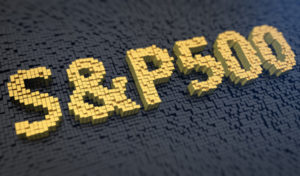
As I’ve written to you before, the S&P is constructed somewhat like an actively managed fund. Real people choose which stocks go in, and which remain out. Robin Wigglesworth writes in the Financial Times that David Blitzer, the current head of the S&P Dow Jones’ index committee, has done what few others have been able to do by creating decent low risk returns.
But Wigglesworth also points out that it is unlikely Blitzer’s success can be maintained (that’s not a knock on Blitzer who isn’t attempting to generate maximum returns with his picks). It’s just math. As volatility increases in the S&P 500, even to the upside, risk adjusted returns may come down. Wigglesworth writes:
Perhaps the world’s best-performing stock picker this year is a little-known New Yorker fond of colourful bow ties. He has made money every single month this year, notching up a total return of more than 22 per cent even as many hedge fund titans stumbled once again.
Moreover, our unassuming hero boasts a Sharpe Ratio — a popular measure of risk-adjusted returns — of about 3.2 this year, according to Goldman Sachs. To put this in context, Renaissance Technologies’ Medallion fund, arguably the most successful hedge fund of all time, is said to boast a Sharpe as high as 4. Many are happy to aim for a ratio of 1.
Yet David Blitzer doesn’t run a big Wall Street investment firm or Greenwich hedge fund. In fact, he doesn’t actually manage any money. Mr Blitzer heads S&P Dow Jones’ index committee, where he is the ultimate arbiter of what companies make up the S&P 500 benchmark.
And while stockpickers have for once enjoyed a decent spell of performance, the S&P 500 has been a risk-adjusted performance star this year, smashing most rivals. The index’s long-run ratio averages about 0.7, and this year’s performance is the second highest in the past six decades, according to Vincent Deluard of INTL FCStone, a brokerage. Can this barnstorming period of risk-adjusted returns continue?
Probably not. Sharpe is derived from comparing returns to volatility, and subtracting the risk-free return rate of cash. The S&P 500’s superlative ratio reflects how gains have been both stunningly strong and steady in 2017, with volatility plumbing five-decade lows. If that reverses, then the Sharpe will return to earth. Indeed, even if the stock market suddenly rockets higher the ratio would ironically also fall.
Read more here (subscription required).



